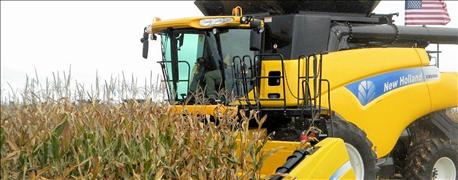November 29, 2016

Asking a seed corn company’s executive if today’s cornstalk residues are slower to break down is sure to raise that suspicious “Why are you asking?” look. The truth: Yes, they are, and it’s good news and not-so-good news — nothing you can’t manage, though.
Today’s corn plants are bred to be healthier later into the growing season. That translates into stronger stalks, less lodging and more crop residues to protect soils. In continuous no-till fields, it also means a buildup of stalk residues and the need for a more aggressive planter setup to ensure adequate seed placement and emergence.

SLOW TO GO? No-till stalk residues may reach grain yield-reduction levels without intervention, such as combine stalk chopping. (Photo: GeringhoffUSA)
In high-yield environments, stalk residue buildup can be too much of a good thing. That’s why research studies by DuPont Pioneer and University of Missouri found that removing some excess corn residues provided a substantial benefit.
As the accompanying graphic shows, corn yields increased 6 bushels by fall stalk chopping and 23 bushels by partial stover removal. So, now is a good time to plan ahead for managing those continuous no-till corn residues. Your options include a chopping corn header on the combine, stalk chopping or stalk baling.
Fall N doesn’t help
Fall nitrogen application does nothing to speed stalk residue breakdown, according to Sjoerd Duiker, soils agronomist at Penn State University. And, he points out, it’s not a best environmental management practice. N quickly washes off corn residues above the soil.
Residue decay is limited by soil temperature and moisture, not a shortage of nitrogen to feed microbes, adds Mahdi Al-Kaisi, Iowa State University corn research leader. Applying nitrogen for this purpose simply increases expense and N loss.
Spring N application and manure application are far more effective in stimulating stalk decomposition.
The carbon-to-nitrogen ratio of cornstalks typically ranges from 40:1 to 80:1. It needs to be brought down to 10:1 by soil microbes for conversion into soil humus.
The bottom line: Focus on building healthy soils.

Stalk chopping and baling achieved the highest yields in the DuPont Pioneer and University of Missouri study. (Source: DuPont Pioneer)
You May Also Like




